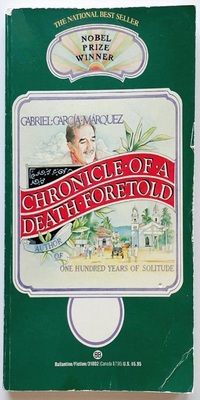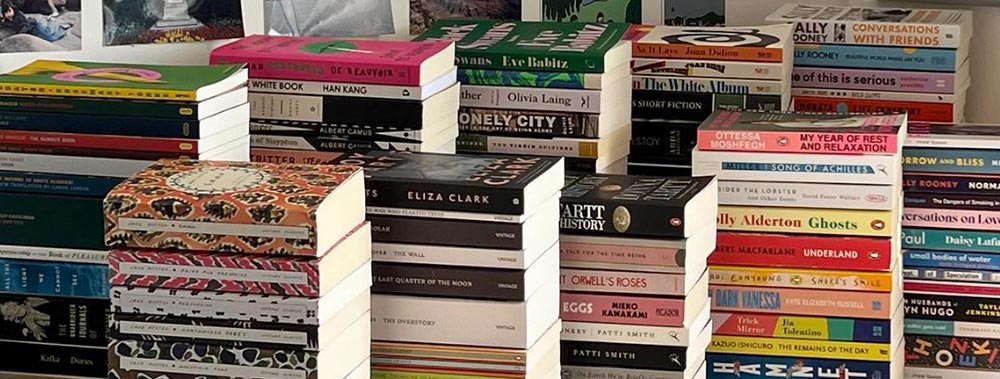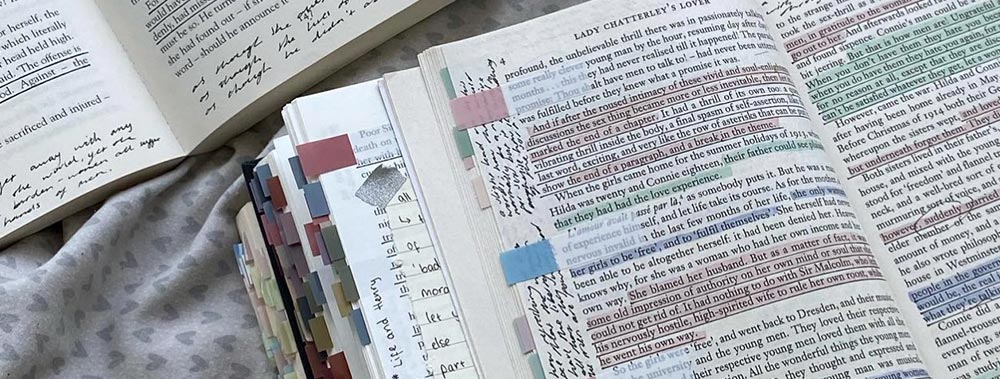Chronicle of a Death Foretold: Summary, Plot, Characters, Literary Analysis & More
“Chronicle of a Death Foretold” is a novel by Gabriel García Márquez, first published in 1981.
The novel stands as one of García Márquez’s notable achievements, capturing both critical acclaim and widespread popularity.
“Chronicle of a Death Foretold” narrates the tale of Santiago Nasar, whose impending demise is known throughout the town, yet remains tragically unpreventable.
Set against the backdrop of a tight-knit community, the story delves into themes of honor, family dynamics, and the inevitability of fate, shedding light on intricate societal complexities.

"Chronicle of a Death Foretold" is the inexorable nature of fate and the powerlessness of individuals to change their predestined outcomes.
Table of Contents
Summary The Plot Characters Key Themes Genres Language used Literary devices Summing upThe Plot
In “Chronicle of a Death Foretold,” the plot revolves around the shocking murder of Santiago Nasar, a young man.
Angela Vicario, claiming Nasar took her virginity, prompts her twin brothers, Pablo, and Pedro Vicario, to seek vengeance.
Despite the impending threat, the town’s knowledge of Nasar’s fate does not prevent the tragic event. The novel unravels the layers of societal honor and inevitability, exploring the consequences of a death foretold within a tightly woven community.
Characters
In this enthralling tale, García Márquez weaves a tapestry of characters whose lives are intricately entangled, contributing to the unfolding tragedy.
Santiago Nasar
Santiago, the ill-fated protagonist, faces an inevitable demise despite the town’s forewarning, illuminating the powerlessness of individuals against destiny.
Angela Vicario
Angela’s accusation of Santiago as her deflowerer sets the tragedy in motion, her actions exposing the paradox of her role in the events.
Pablo Vicario and Pedro Vicario (Vicario brothers)
The Vicario twins, driven by honor, plan and carry out Santiago’s murder, portraying the intricacies of family loyalty and societal expectations.
Bayardo San Román
Bayardo’s marriage to Angela, fueled by pride, triggers a chain of events that lead to the death foretold, emphasizing the complexities of love and social status.
Angela’s Mother
Angela’s mother’s reaction to her daughter’s accusation reflects the intricate interplay of family and honor within the community.
Narrator
The narrator’s quest for truth years after the event exposes the blurred lines between memory and reality, reshaping the account of Santiago’s death.
The Town’s Inhabitants
The collective actions of the townspeople, aware of the impending tragedy, showcase the communal influence on individual choices, shaping the fate of Santiago Nasar.
Key Themes
One prominent theme in “Chronicle of a Death Foretold” is the inexorable nature of fate and the powerlessness of individuals to change their predestined outcomes.
The town’s knowledge of the planned murder of Santiago Nasar, coupled with their inability to avert it, exemplifies this theme.
The theme of honor and its impact on individuals’ decisions is also prevalent, as seen through the Vicario twins’ quest to restore their family’s honor by killing Santiago.
Genres in Chronicle of a Death Foretold
“Chronicle of a Death Foretold” blends elements of mystery, tragedy, and psychological exploration.
The narrative’s mystery arises from uncovering the events leading to Santiago’s death.
The tragic nature of the story is evident in the inevitable outcome, while the psychological aspect lies in analyzing the characters’ motivations and the societal pressures that drive their actions.
Language used in Chronicle of a Death Foretold
García Márquez employs a lyrical and introspective prose style that conveys both the town’s atmosphere and the characters’ emotional turmoil.
The novel’s language navigates the delicate balance between the mundane and the extraordinary, capturing the essence of the wedding night, the tension surrounding Santiago’s death, and the intricate web of relationships within the Vicario family.
The author’s use of vivid metaphors enhances the narrative’s depth, creating a poignant and memorable reading experience
Literary devices in Chronicle of a Death Foretold
In “Chronicle of a Death Foretold,” Gabriel Garcia Marquez masterfully employs a variety of literary devices to enhance the narrative’s impact.
The impending tragedy of the brothers’ plan to kill Santiago is laden with foreshadowing, creating an atmosphere of inevitability.
Bayardo San Roman serves as a symbol, reflecting themes of pride and social status.
Through rich imagery and symbolism, the author weaves a multi-layered tapestry that envelops readers in a world where fate, honor, and human complexities intertwine.
Similes
In “Chronicle of a Death Foretold,” García Márquez adorns his narrative with impactful similes. For instance, comparing Santiago’s impending murder (the twin brothers murder Santiago) to “a blade suspended over water” vividly captures the looming danger and inevitability of the act.
This simile engages readers by invoking a palpable sense of tension. Additionally, Santiago’s lifeless body, described as “still as a stone,” accentuates the finality of his death, eliciting a poignant response from readers.
Metaphors
Santiago’s murder serves as a metaphorical lens through which the town’s moral decay is scrutinized, emphasizing collective complicity.
The character Cristo Bedoya went to warn Santiago, and that becomes a metaphorical beacon of conscience in the face of impending tragedy.
Through these metaphors, García Márquez invites readers to explore the complexities of human nature, the fragility of life, and the intricacies of fate’s design.
Analogies
The murder plot, akin to a tightly woven tapestry, threads together notions of family honor, societal expectations, and individual agency.
Santiago’s mother, personified as a guardian of tradition, symbolizes the town’s collective consciousness, guarding their communal reputation.
These analogies serve as cognitive bridges, allowing readers to grasp the interplay of personal choices within the broader fabric of social dynamics.
Imagery
The image of Santiago dead on the kitchen floor evokes a powerful sense of tragedy and loss.
References to the family ranch, Victoria Guzman and her milk shop, and Angela’s letter-writing all create a rich sensory backdrop, immersing readers in the town’s vivid reality.
Such imagery deepens the emotional resonance and adds layers to the narrative, making the story’s events and characters more palpable.
Symbolism
“Santiago’s life and death symbolize the fleeting nature of existence and the inexorable march of fate.
Angela’s wedding dress for her wedding day, worn twice, signifies the loss of innocence and the weight of societal expectations.
The town’s obsession with honor is embodied by Angela’s role as a symbol of her sister’s honor, underlining the theme of communal values and individual sacrifice.
Personification
Personification breathes life into the characters and setting of the novel.
Santiago’s residence, for example, “lived and died” with him, creating a sense of unity between character and environment.
Angela writes about her wedding, imbued with emotions, and takes on a life of its own.
These instances of personification infuse the narrative with vivid energy, bridging the gap between the internal and external worlds of the characters and enhancing the reader’s engagement.
Hyperbole
García Márquez employs hyperbole to amplify certain moments in “Chronicle of a Death Foretold.”
Notably, Pablo’s hurried marriage to his fiancée (we dont know why Pablo marries her in a hurry) is described as “an iron trap” that binds them together. The hyperbolic portrayal accentuates the urgency and intensity of the situation.
Similarly, the exaggerated emphasis on how Pablo left Flora Miguel and Divina Flor reflects the intensity of emotions in the characters’ relationships and highlights their complex intersections within the narrative.
Irony
The story begins with the announcement that Santiago lived, foreshadowing his tragic fate. The passage of seventeen years since the event reveals the paradox of time’s impact on memory and truth.
The local priest’s inability to prevent the murder showcases situational irony, while the town’s collective failure to find Santiago, despite knowing his fate, exemplifies dramatic irony.
Ibrahim Nasar’s name, “Nasar” meaning “nosebleed,” ironically hints at his impending death.
Juxtaposition
García Márquez employs juxtaposition to draw attention to contrasting elements in “Chronicle of a Death Foretold.” The chronological order of events is disrupted, weaving a web of anticipation and reflection.
The presentation of Santiago’s death alongside descriptions of Angela’s new husband and her marital home at the “front door” starkly contrasts with the violent end he met at the “back door.” These juxtaposed scenarios invite readers to ponder the collision of love, innocence, and brutality.
Paradox
The novel contains paradoxical elements that invite readers to explore deeper meanings.
The description of Angela’s wedding as the “biggest wedding” carries a paradoxical weight, juxtaposing the grandeur of the occasion with the impending tragedy.
The role of a bride is paradoxical, intertwining innocence with the violent fate that awaits.
Such paradoxes add layers of complexity to the narrative, engaging readers in its intricate tapestry of emotions and themes.
Allusion
The local priest and his inability to prevent Santiago’s murder alludes to the concept of religious authority being ineffective in the face of human folly.
The name “Ibrahim Nasar” alludes to the biblical figure Abraham and his sacrifice, adding layers of meaning to Santiago’s fate.
The whole town has awareness of the impending tragedy in broad daylight alludes to collective responsibility and the inescapable nature of fate.
Allegory
While not a straightforward allegory, “Chronicle of a Death Foretold” does contain elements that can be seen as symbolic of broader themes.
Pedro Vicario’s role could be interpreted allegorically as the conscience that wrestles with societal expectations.
The narrator leaves town and that can symbolize a departure from complicity, echoing the struggle against collective guilt.
The presence of the police officer allegorically reflects the blurred line between justice and the town’s twisted sense of honor.
Onomatopoeia
García Márquez’s writing doesn’t heavily incorporate onomatopoeic words.
Instead, the narrative relies on vivid imagery and emotive language to engage readers and evoke sensory experiences.
The Use of Dialogue
Dialogue in “Chronicle of a Death Foretold” is a dynamic tool for revealing character traits, themes, and narrative tension.
Conversations involving Angela Vicario unveil the depth of societal pressure on women and the complexity of her emotions.
The discussions about killing Santiago among the Vicario brothers and the town’s inhabitants create a palpable tension that mirrors the impending tragedy, ultimately driving the story forward.
Word Play
García Márquez employs wordplay techniques to add layers of meaning to the narrative.
Instances like “kill Santiago” serve as both straightforward instructions and symbolic of societal norms.
The play on words surrounding the wedding night symbolizes the interplay between innocence and violence.
The name Bayardo San Román holds both grandeur and a hint of manipulation. Such wordplay enhances the complexity of character motivations and thematic undertones.
Parallelism
The parallel portrayal of the Vicario twins’ journey and Angela’s wedding night juxtaposes innocence and impending violence.
The mirrored accounts of various characters build a mosaic of perspectives on the same event, exploring themes of truth and subjectivity, enriching the narrative’s multifaceted nature.
Rhetorical Devices
García Márquez strategically employs rhetorical devices in “Chronicle of a Death Foretold” to persuade and engage readers.
Rhetorical questions surrounding Angela Vicario’s situation and the Vicario brothers’ intent provoke contemplation on societal norms.
The parallelism of the Vicario twins’ determination to kill Santiago underscores the rigid expectations of honor. These devices heighten the story’s impact, prompting readers to delve into the intricate layers of motive and consequence.
Chronicle of a Death Foretold: FAQs
In this section, we address the frequently asked questions that illuminate the complexities of the plot, the symbolism within the story, and the unique narrative structure that characterizes Márquez’s work.
What is the summary of the Chronicle of a Death Foretold?
“Chronicle of a Death Foretold” narrates the story of Santiago Nasar’s impending murder despite the town’s awareness. The narrative explores honor, fate, and the communal influence on individual choices.
What is the main theme in the novel Chronicle of a Death Foretold?
The central theme is the inexorable power of fate and honor within a tightly woven community. The novel delves into collective responsibility, moral decay, and the complexities of human behavior.
What is the lesson in Chronicle of a Death Foretold?
The novel highlights the consequences of societal rigidity, emphasizing the dangers of blindly adhering to traditions and honor codes. It prompts reflection on the impact of collective complicity and moral ambiguity.
Who goes to kill Santiago in a Death Foretold?
Pablo and Pedro Vicario, Angela Vicario’s brothers, embark on the mission to kill Santiago Nasar in order to restore their family’s honor. Despite the town’s awareness of their plan, the murder proceeds as a tragic inevitability.
Summing up: Chronicle of a Death Foretold: Summary, Plot & More
As is apparent from this “Chronicle of a Death Foretold” summary, this work resonates as a masterful portrayal of the interplay between fate, honor, and human nature within a close-knit community.
García Márquez’s skillful use of literary devices weaves a multi-layered narrative that challenges perceptions and evokes profound introspection.
Through its intricate characters and thought-provoking themes, the novel invites readers to grapple with complex moral dilemmas and the consequences of collective complicity.
With its blend of suspense, social commentary, and poetic prose, the book remains an enduring exploration of the intricacies of life, death, and the enigmatic bonds that connect us all.







